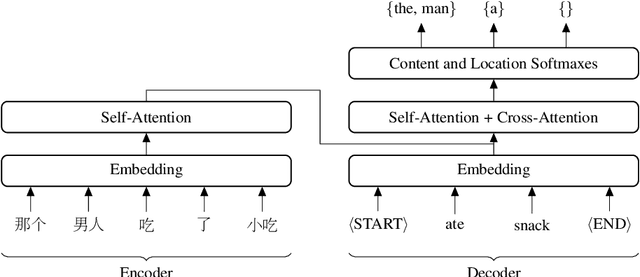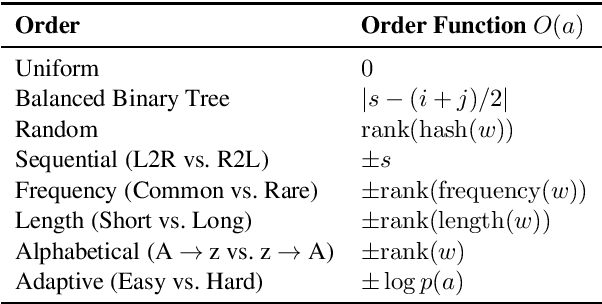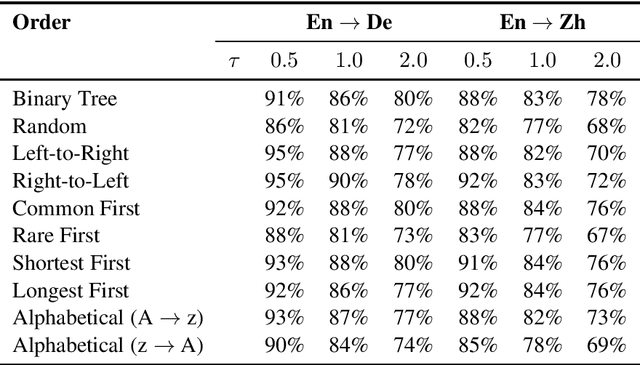An Empirical Study of Generation Order for Machine Translation
Paper and Code
Oct 29, 2019



In this work, we present an empirical study of generation order for machine translation. Building on recent advances in insertion-based modeling, we first introduce a soft order-reward framework that enables us to train models to follow arbitrary oracle generation policies. We then make use of this framework to explore a large variety of generation orders, including uninformed orders, location-based orders, frequency-based orders, content-based orders, and model-based orders. Curiously, we find that for the WMT'14 English $\to$ German translation task, order does not have a substantial impact on output quality, with unintuitive orderings such as alphabetical and shortest-first matching the performance of a standard Transformer. This demonstrates that traditional left-to-right generation is not strictly necessary to achieve high performance. On the other hand, results on the WMT'18 English $\to$ Chinese task tend to vary more widely, suggesting that translation for less well-aligned language pairs may be more sensitive to generation order.
 Add to Chrome
Add to Chrome Add to Firefox
Add to Firefox Add to Edge
Add to Edge